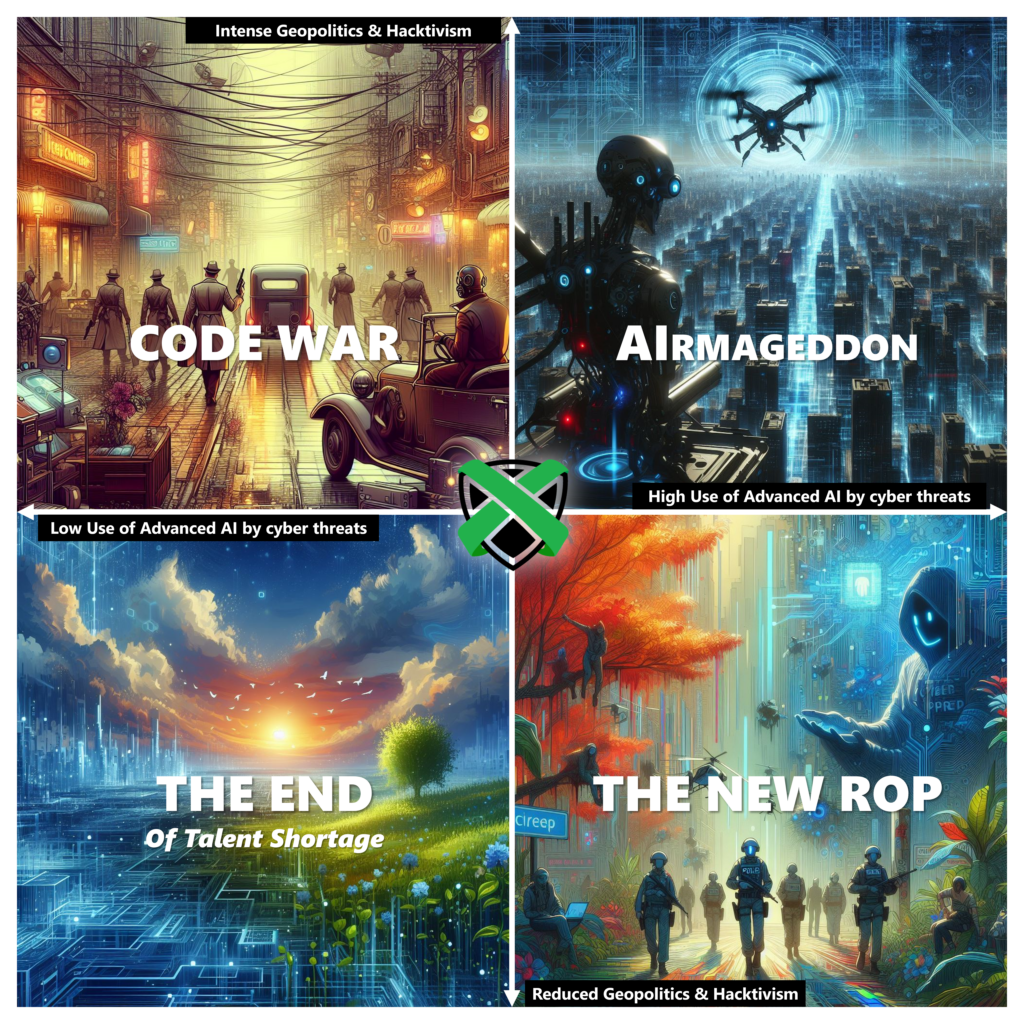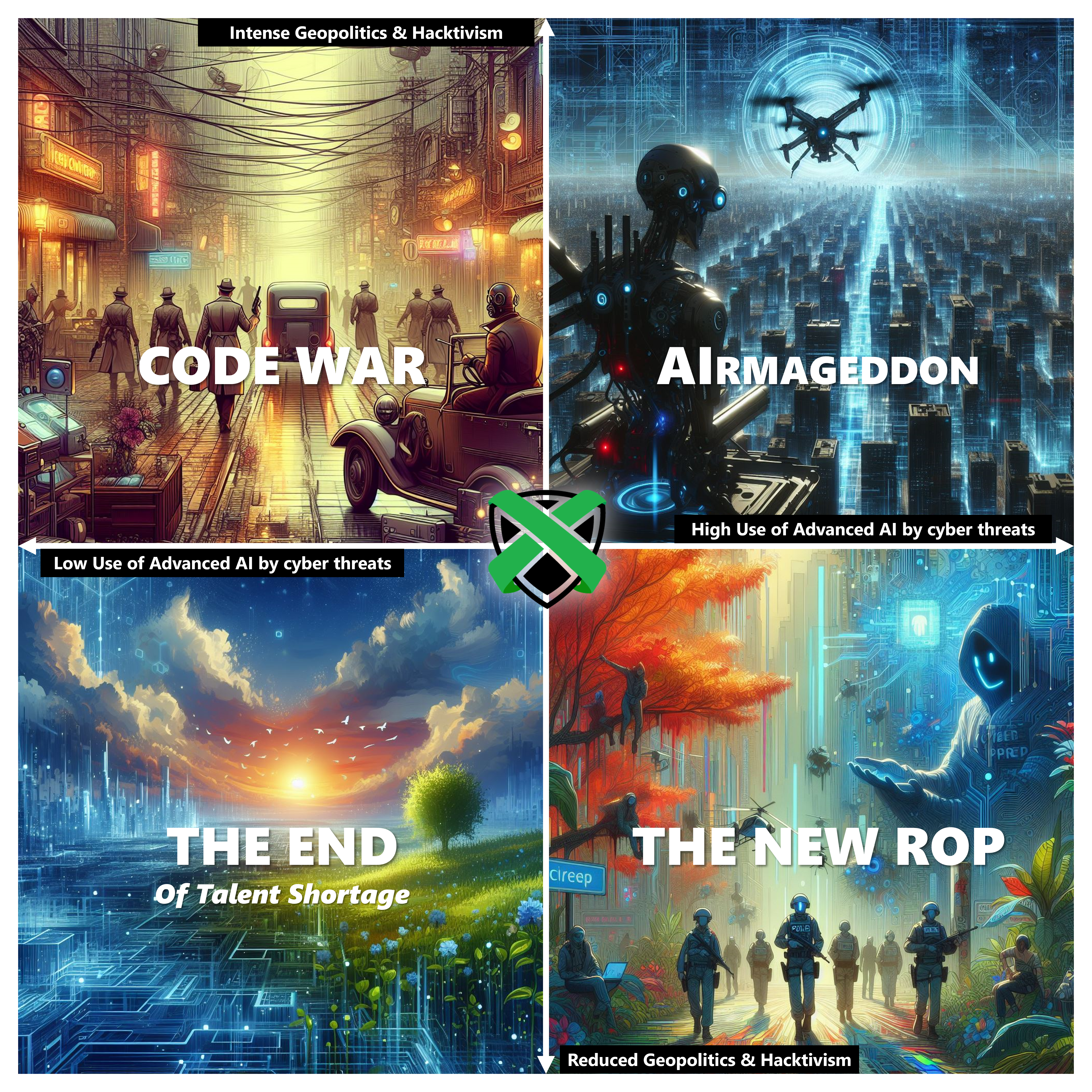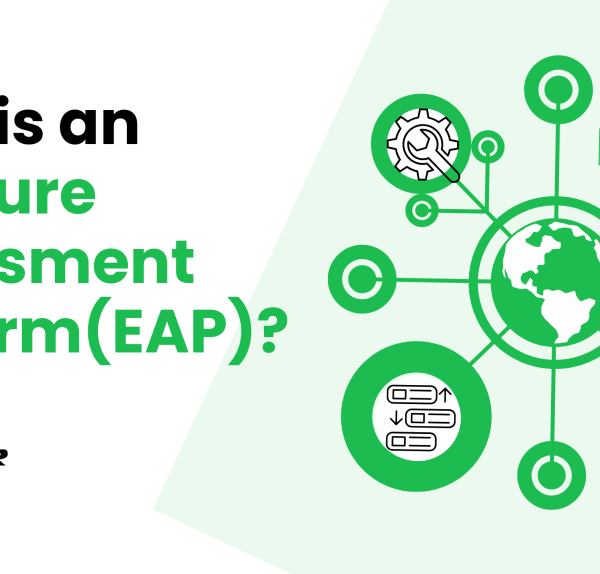2024 Cyber Threat Prospective : AI or Geopolitics, or both, or none
In an era where technological breakthroughs and geopolitical strategies evolve at breakneck speed, predicting the cybersecurity landscape of 2024 is not for the faint-hearted. Yet, this is precisely the endeavor Ronan Mouchoux, our Chief Product & Engineering Officer and Co-founder with a deep-rooted expertise in cyber criminology and cyber threat intelligence, undertakes in this comprehensive analysis.
This 2024 Cyber Threat Prospective article unfolds through the lens of four meticulously crafted scenarios—AI Armageddon, Cybernetic Peace, Digital Cold War, and Cyber Utopia. Each scenario paints a vivid picture of what 2024 might hold, driven by the dual forces of technological innovation and international political dynamics. This isn’t about drawing a linear trajectory from present to future but about preparing for a future where AI and geopolitics could either clash in a perfect storm or align in a symphony of cyber resilience.
As we stand on the cusp of 2024, Cyber Threat prospective serves as a crucial navigational tool for policymakers, cybersecurity professionals, and technology leaders alike. It’s an invitation to engage with the complexities of the future head-on, armed with knowledge and strategic foresight. Mouchoux’s analysis goes beyond mere prediction, offering a strategic framework for thinking about and preparing for the cyber challenges and opportunities ahead.
Read the full article on XRATOR‘s Conquer Your Risk blog: 2024 Cyber Threat Prospective : AI or Geopolitics, or both, or none.
Summary
Drawing from a diverse array of expert predictions and utilizing a methodological blend of forecasting and prospective analysis, the study articulates four distinct scenarios: AI Armageddon, Cybernetic Peace, Digital Cold War, and Cyber Utopia. Each scenario unfolds from the interplay between high or low utilization of AI in cybersecurity threats and the intensity of geopolitical cyber warfare, providing a rich patchwork of potential outcomes ranging from dystopian conflicts driven by AI to harmonious landscapes where digital peace prevails.

AI Armageddon forecasts a scenario where AI escalates cyber warfare to unprecedented levels, necessitating advanced defenses and international regulations to counterbalance the threats. Cybernetic Peace suggests a reduction in geopolitical tensions but highlights the rise of sophisticated AI-driven cybercrimes, calling for robust countermeasures and global legal frameworks. The Digital Cold War scenario reflects a continuation of traditional espionage and cyber conflict tactics, emphasizing the importance of human intelligence and conventional cybersecurity methods. Finally, Cyber Utopia envisions a balanced cyber environment where AI threats are minimal, and cybersecurity education and human-centric solutions are paramount.
Underpinning these scenarios is the understanding that cybersecurity is not an isolated issue but a global challenge influenced by an intricate web of technological, geopolitical, and psychological factors. The article advocates for adaptable, forward-thinking cybersecurity strategies capable of navigating the uncertain waters of 2024’s digital world.
The analysis draws on a wide-ranging review of predictions from leading cybersecurity entities, including Trend Micro, Kaspersky, Secureworks, Mandiant (Google Cloud), and NortonLifeLock. These insights form the foundation for a prospective analysis that transcends mere prediction, aiming instead to prepare for a spectrum of possibilities.
In conclusion, the article underscores the critical importance of adaptability, proactive planning, and ongoing engagement with emerging cybersecurity trends. As we stand on the precipice of 2024, the collective actions of policymakers, cybersecurity professionals, technologists, and citizens will determine the trajectory of our digital future. The scenarios presented, though speculative, are grounded in current trends and expert analysis, serving as a call to action for all stakeholders to navigate the evolving cybersecurity landscape with responsibility, curiosity, and cautious optimism.
Read the full article on XRATOR’s Conquer Your Risk blog: 2024 Cyber Threat Prospective : AI or Geopolitics, or both, or none.
The author’s word
As 2023 folded into history, the crescendo of debates around Generative AI and its potential to magnify cybercrime and threat landscapes reached a fever pitch. Yet, for those of us entrenched in the world of cybersecurity, the unfolding drama isn’t just about AI. It’s also about the resurgence of hacktivism, spurred by geopolitical tensions simmering online, morphing into a complex web of cyber challenges.
This article isn’t another crystal ball gazing session. It’s about digging into the trenches of what 2024 might hold for cybersecurity, armed with a clear-eyed view that the future doesn’t march in a straight line. Cyber threats evolve in a dance with technology, politics, and human behavior—each step unpredictable, every turn complex.
Through the lens of four meticulously crafted scenarios—from AI Armageddon to Cyber Utopia—I strip down the hyperbole to present a landscape where the intersection of AI advancements and geopolitical strategies could take us. It’s about laying out the chessboard, not predicting the checkmate. We’re exploring potential moves in a game where the rules are continuously rewritten by advances in technology and shifts in global power dynamics.
Why engage in such an endeavor? Because the essence of prospective analysis lies in preparation, not prediction. It’s about equipping ourselves with the foresight to navigate through the fog of uncertainty that defines our digital era. Each scenario serves as a navigational beacon, guiding us through the possibilities that lie ahead, urging us to think critically and prepare strategically. My best wish it that, for 2025, this 2024 Cyber Threat Prospective will still be true, meaning that the two main drivers I choose – AI and Geopolitics – were indeed the key factors to anticipate future threat.
I invite you to delve into this exploration with me. Not just as readers, but as thinkers, planners, and actors in the cyber narrative of tomorrow. This article isn’t just about understanding the potential futures; it’s about shaping our response to them. The future of cybersecurity isn’t preordained—it’s in our hands.
Read the full article on XRATOR’s Conquer Your Risk blog: 2024 Cyber Threat Prospective : AI or Geopolitics, or both, or none.






